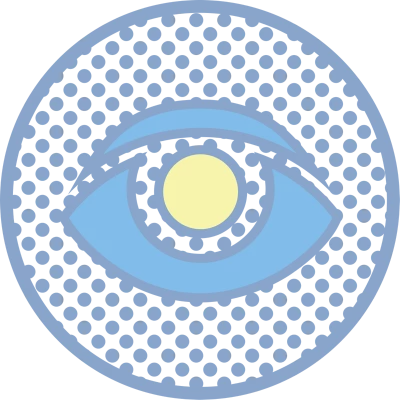Categories
PATIENT EDUCATION A normal person or an Emmetrope sees well because rays from the outside world fall exactly on the light sensitive retina allowing them to see sharp and clear images of the world. In people with refractive error (or poor vision, such as nearsightedness or farsightedness), the light rays do not get focused on to the retina and blurred images are formed.
- All Treatment
- Cataract
- Lasik Surgery
- Cornea
- Keratoconus
- Vitreo Retina
- Squint
- Contact Lens
- Uvea
- Computer Vision
- Oculoplasty
- Glaucoma
- Diabetic Retinopathy
- Fungal Keratitis
- Macular Hole
- Retinopathy Prematurity
- Retinal Detachment
- Macular Edema
- Pterygium or Surfers Eye
- Blepharitis
- Nystagmus
- Ptosis
- Allergic Conjunctivitis
- Behcets Disease
- Hypertensive Retinopathy
- Mucormycosis / Black Fungus
What is a Macular hole?
A Macular hole is a hole in the central part of the retina, which is most important for vision. The retina is the innermost light-sensitive layer of the eye, akin to a film of a camera where the image is formed.
In some cases, the macula nerve cells separate from one another and unplug from the back of the surface. This makes a hole in the back of the eye which can affect the eyes in multiple ways.

Macular Hole Symptoms
Below we have mentioned some of the many symptoms of macular hole so you can receive the right treatment at the right time:
Decrease in vision
Straight lines appearing curved
No symptoms but detected on a routine examination
Causes of Macular hole
Below we listed some of the many causes of macular holes:
Age related degeneration of the Vitreous (the gel like structure that keeps the eyeball taut)
Injury with fist, ball, shuttlecock, firecracker etc
High Myopia or short-sightedness
Following long standing diabetic maculopathy
Solar eclipse viewing

Who is at risk of developing a macular hole?
A macular hole is more common in those over 50 years of age and female gender. To put it more precisely, the developing stages of macular holes can be divided into parts or sections. Macular hole progresses through 4 stages (which are graded on OCT scan images). The vision is poorer in stages 3 and 4 compared to stages 1 and 2.
Types of Macular holes
Macular hole progresses through 4 stages (which are graded on OCT scan images). The vision is poorer in stages 3 and 4 compared to stages 1 and 2.
Diagnosis
Diagnosis is made by the Ophthalmologist on a clinical examination after dilating the eyes and viewing the retina under magnification with an appropriate lens. Since the hole may sometimes be small/subtle, an optical coherence tomography (OCT) scan is almost always done to confirm the diagnosis as well as to measure the size of the hole, determine its stage and predict the outcome of treatment.
Treatment
Age-related macular holes of stage 2 and beyond can be successfully treated with vitrectomy surgery. In this procedure, the vitreous gel from inside the eye is removed, the hole opposed, and a gas bubble-filled inside the eye, which self-absorbs in 4-6 week period.
Some surgeons may recommend a face-down position for the initial few days after the surgery to hasten the closure of the hole. Stage 1 holes do not need surgery, but serial check-ups to detect progression to subsequent stages are recommended. If the contralateral eye has developed a macular hole, more frequent check-ups for the normal eye may be advised. Macular holes secondary to other causes carry a poorer prognosis.
FAQ
-
What are some things to remember after Macular hole surgery?
When it comes to macular hole surgery, ensure you visit a reputed hospital to seek the best eye care with the help of expert ophthalmologists and surgeons. Post your surgery, you will be advised to follow some post-operative care instructions like maintaining a head-down position for six to eight hours for over a week.
The patient has the flexibility to choose whether they want to lie down or sit in one position with the help of a headrest. This post-surgery measure is essential as it gives a proper gas sealing effect on the macular hole. -
What happens in a Macular hole surgery?
Macular hole surgery is performed under the effect of anaesthesia so that the patient is in their senses but does not feel the procedure. The process of macular hole surgery can be divided into two parts. In the first part, a gel-like fluid called vitreous is removed from the eye.
The surgeon makes an opening in the eye to skillfully insert medical instruments used to remove the fluid. In addition, they also begin the process of removing small tissues or membranes near the macular hole by using forceps. This step prevents the macular hole from closing, ensuring that the surgery is carried out smoothly.
In the last stage of macular hole treatment, a sterile gas is exchanged with the fluid present in the eye to keep a specific amount of pressure on the macular hole until it is properly healed. -
What can I expect after Macular hole surgery?
Your vision will be blurry when the bubble is at its full size and as it begins to dissipate. However, over a couple of weeks after the surgery, your vision will automatically start improving, which might give you slight discomfort with a scratchy feeling. In this case, it is best to get in touch with your doctor, who will suggest you the right pain-reducing techniques and medicines.
Usually, the prescribed medicines are Tylenol or similar pain relievers, but you must report to your doctor if they also turn ineffective. In addition, mild or even extreme redness is common as it will gradually reduce over time.
As a preventive measure, try to avoid high altitudes or elevations as they can force the bubble to expand beyond a standard size. Since this can lead to eye damage, it is better to avoid flying until the bubble is fully resorbed. -
What are lamellar Macular holes?
The cavity of the eyes is filled with a gel called the vitreous humour. Now, as we age, this gel naturally gets pulled from the retina, displacing a tissue in the eye and forming a lamellar hole. In most cases, lamellar holes can only be diagnosed or detected through a thorough retinal scan.
In several instances, lamellar holes are interconnected with other medical conditions like Vitreomacular traction, Epi-retina membrane, Cystoid macular oedema, and more. Your ophthalmologist will test your eyes for all the above-mentioned conditions to ensure you receive the right treatment at the right time.


